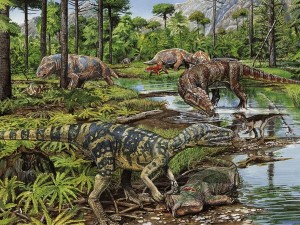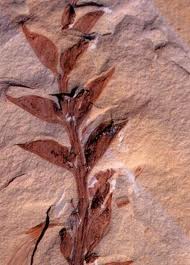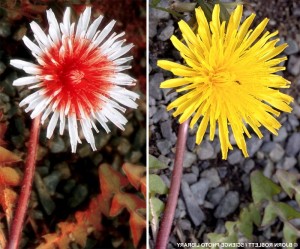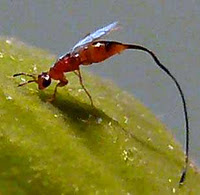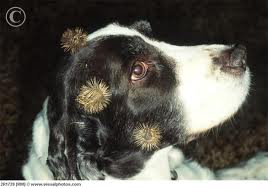Green Deane’s Newsletter
September 2010
Why learn how to forage?
The pocketbook is always a good reason.
The price of food staples are predicted to rise 45% over the next 10 years. (Corn, rice and wheat prices alone tripled from 2006 to 2008.) The prediction was made by the UN’s Food and Agriculture Organization.
Most of the food most people eat on earth are comprised of one or more of six staples: Corn, wheat, rice, potatoes, taro, and cassava. The price of vegetable oil is also predicted to go up as much as 40%. As I am a critic of vegetable oil removed from the vegetable that might be an opportunity to reduce consumption of said.
As for the staples, you should to learn to identify your local “staples” and benefit from their superior nutrition and almost zero cost. Locally those are cat tails, the winged yam, ground nuts, the spurge nettle, and acorns. If I could add a second tier more it would be bulrush root, thistle root, kudzu starch, crowfoot grass seed, pickerelweed seeds and perhaps red spiderling root, also called the tar vine. Farther north I would certainly add burdock root to the list as well as other roots and nuts.
Interestingly the predicted increase in cost is based upon not less production but on more difficulty getting the raised food to market. That makes picking sow thistles in my yard even more attractive. So when someone asks “why forage” you can say because you can get your own food rather than be dependent on someone growing and delivering it.
This leads me theft. I am going to borrow the phrase, “peak oil.” That is the theory that at some point oil will become too expensive to find and refine and society will collapse. I’m not so sure about “peak oil” but I let me introduce what I will call “peak food.” Will there come a time when food is too expensive to grow and transport?
If I were inclined I could go to my local grocery store and buy cucumbers nearly all year long. The buyers simply move about the country and the world following seasons and buy successive in-season cukes. What if they become too expensive to transport? Or grow? Fertilizer is tied to industry and without it, less food. We’ve seen sporadic food shortages and price spikes. I don’t know if “peak food” is a possibility or not, but if so foraging is an answer for some.
As a side note about staples, you may be thinking “I almost never eat corn.” But, it is nearly impossible to escape eating corn in America even if you never eat corn. It is fed to nearly every food animal we raise, its fructose is in nearly every prepared, packaged and or canned food. It’s oil is almost as common. Even chemicals far removed from edible corn are made from corn. If one plant holds the American society together, it is corn, as rice does elsewhere in the world. Corn is so woven into our lives that if you were to analyze the carbon of your cells and where it came from, you are made of corn carbon. Believe it or not.
THE PAPER TRAIL
I’ve had some surprises since my last newsletter, which shows that no matter how long you study foraging there is always something new to learn, and keep you interested.
When I was first foraging in Florida I asked what a particular tree was. The answer I got from my foraging friends (and teachers) was they did not know. I was always curious because the tree was everywhere in colonies and seened too common to be totally useless. In time I identified it as the Paper Mulberry (Broussonetia papyrifera, formerly Morus papyrifera.) A transplant from East Asia it is naturalized in about 30 states from Vermont southwest to Nebraska and all points south. It came to Florida in 1903.
As the name suggests its zebra-striped bark was and is used to make paper and cloth. Young leaves can be cooked as a green though there is a texture issue. Its huge leaves can be used to cook food in. It also has a pom-pom like fruit. That was the part I had never seen. In fact I had never seen 1) a female tree and 2) a female tree in fruit. The tree can spread by roots, but since I found it in places such as in the middle of a forest I presumed there had to ladies around and they had to fruit now and then. However, years of searching never turned up any female trees or fruit.
While giving a foraging class in Ocala in early May I came upon not one but several fruiting Paper Mulberry Trees. The fruit were still green so a month later I made the near 200 mile trip just to the tree in its full reproductive glory. The result was video 119.
The real question is why did it fruit? The tree grows from tropical humid climates to temperate ones. Male trees — mostly clones — were planted among the pacific islands, apparently producing better fiber. And all the trees locally are male, imported as ornamentals. But some female trees must have been planted (though one writer has suggested the trees can change sex.) I think I have a less exotic possible answer why they fruited this year.
While the tree is commonly known as one that thrives in warm climates its native range is temperate, read cool or cold winters but not bitterly cold. This past season Florida had its coldest winter in 30 years, breaking many records. Maybe, just maybe, the trees need a certain amount of chill hours to produce fruit. That is not uncommon among many trees, apples to olives.
So while I did get a chance to taste some this year we will have to wait and see what the coming winter is like and if there will be Paper Mulberry to be had in the spring.
Surprise #2
The other surprise came from a book I picked up called: Edible Plants of the Gulf South. In there it says the Liatris species are edible. I’ve been looking at them for 30 years and didn’t know that. At the moment however, the only spot I know where they go is in a non-pick state park. As soon as I find a patch elsewhere it will be time to experiment. Thus I cannot yet recommend them as I have not tried them. However…
There are a couple of reasons to be excited about the Liatris. First, they are fairly easy to identify, and where they do grow there’s usually a lot of them. But what’s more interesting is that some experts think they can live for a century or more waiting for just the right conditions to flower, usually right after a forest fire. It seems the corm is dependent on fire to tell it when to send up a sprout.
Many years ago I remember Dick Deuerling talking about the Liatris but I don’t remember him mentioning it was edible. Dick is the professor emertitus of foraging here in Florida and now in his 90’s. Uncoperative knees, however, keep him from foraging as much as he would like.
As for Edible Plants of the Gulf South, I would be careful. I have found a few discrepancies that makes me add a note of caution. The book mentions pyracantha fruit are edible but fails to mention the seed should not be eaten. In discussing Sumac no mention is made of edible shoots and branch tips. And the book repeats the old advice that Nuphar lutea root is edible. I have tried for some 20 years to figure out a way to make that root edible, all ending in bitter failure. I do not know of any professional forager anywhere in the world who recommends it. I have even raised it myself in good water and harvested it young to see if that made any difference. It didn’t.
There is one reference in the 1600’s by naturalist John Josselyn who said of the Nuphar, “The Indians eat the roots, which are long a boiling they taste like the liver of sheep.” Frankly, tasting like the liver of sheep would be a grand improvement. A Dr. Edward Palmer, presumably the one who traveled to Indian reservations in the 1800s, said squaws dove into ponds for the roots but preferred to raid muskrat dens for them. However, he made that observation in California and identified the plant as N. advena.
If I can get pseduo scientific for a moment. Technically, Nuphar lutea does not grow in North America. For a long time many botanists thought there was just one Nuphar, the lutea. Other botanists disagreed and said there were different species because, gasp, they don’t all look alike. The One-Species School ruled until 1997 when modern research showed there are some 15 different Nuphar. Thus the point has to be made that if there are several species of Nuphar in North America some might be edible some not. I know the ones here in Florida, Nuphar Lutea subsp advena, are not, or at least I have not made them so. That said, Dick Deuerling did tell me once that he did harvest a local Nuphar root and found it edible after boiling. .. Maybe it was a mutant. He is the only person alive that I know of that can make the claim he at Nuphar root and that it was good.
To read the Nuphar confusion in its entirety click here:
LET THERE BE POKE
Poke weed (Phytolacca americana) is a rite of passage for many new foragers. Common, toxic, and tasty when prepared properly, no one forgets the first serving of poke weed they collected on their own and consumed. Once past that comes the common question, “can you eat the berries?” The answer is no. However, Professor Julia Morton said the cooked juice was edible, though drinkable would be more accurate. Now we know poke weed juice has another use. Researchers have found that the red coloring of the berries when painted on fiber-based solar cells creates greater conversion of light into electrical energy.
Fiber-based solar cells are very efficient having the ability to generate twice as much power than “traditional” solar cells. Usually plastic fibers are stamped onto plastic sheets, using the same technology used for attaching tops of soft-drink cans. After that, an absorber (in this case, dye from the pokeberries) is sprayed on the cells. The results is a lightweight, adaptable electrical source that can be shipped anywhere in the world at a low cost. Not bad for a toxic plant some would make illegal.
AND YOU THOUGHT IT WAS YOU
Mosquitoes prefer to bite beer drinkers over non-beer drinkers. French researchers used 25 volunteer beer drinkers and 2500 mosquitos (and as a control 18 volunteers drinking water, and 1800 mosquitos.) Before you start feeling sorry for the volunteers know the mosquito activity was not biting but rather taking off and flying up wind towards the volunteers.
Now, one might ask, why research such an issue? Apparently in malaria-infested areas 20% of the population account for 80% of the cases of malaria. The researchers were looking for a correlation between increased alcohol consumption and malaria cases. Their conclusion, released in March, is that getting malaria is not always just a random event. As alcohol consumption increases, or moves into an area, so to does malaria.
Incidentally, body temperature and amount of carbon dioxide exhaled did not influence mosquito behavior.
WASABI TO THE RESCUE
Smoke alarms for the deaf and now being made to send out an odor plume of the horseradish-like condiment wasabe. It is said to be very effective waking them up.
NOT WELSH BUT SCOTTISH RABBIT
A Sottish island with 20 residents had a rat infestation. They brought in experts from New Zealand and several million dollars later the rats were gone. Now they have a bunny infestation. Apparently the rats were rabbit birth control. With no rats the bunnies played house. At least they are moving up the food chain. Hoffenpepper is better than … rat-atoe.
Lawn Tax
Someone once said that coincidences is just God’s way of letting you know he exists. If that’s so it has to apply to innocent coincidences, I think, like getting a random seat at a concert in a foreign country and ending up sitting next to the mother of one of your student (that happen to me in Scotland.) Then there are other coincidences such as every time I get a home owner’s meeting notice left at my door (rather than mailed) I get a notice within two weeks from the county that my front yard is “over grown” and in violation of code… a not-so-innocent coincidence. It is the tenor of the times and I think it will happen to more people as we come to realize laws just aren’t “green.” Here’s a related link I did for National Dutch Radio.
While I would like to broadside home owner associations one has to recognize what they are doing, which is representing property owners who expect and want a certain kind of physical look and use to their property. What is ignored is that I, too, want a certain physical look and use to my property. They want decapitated grass putting greens for lawns. I want au natural and food. We have opposing use in mind and right now they inherited the legal clout. Thus three things have to happen.
The grass fanatics, and Lawn Enforcement Officers, have to learn that au natural is good and that lawn is not good for the environment or the economy. In short we have to get away from the idea that one is allowable in suburbia and one is not. At the same time we have to be aware of everyone’s property rights (at the moment if you want something other than lawn your property rights are being excluded from the legitimate column.)
It is rather odd when one thinks about it. My neighbor dumps herbicides on her lawn, and pesticides and fertilizer. She plants toxic ornamentals and drains off precious water to keep the entire artificial concoction alive. If you ate any part of it it would make you sick or kill you (indeed, such lawns are the source of nearly all children poisonings.) There are no living creatures about her lawn, no bugs or birds et cetera. Her toxic, sterile front yard is legal. My front yard is not pesticided, herbicided, fertilized nor draws off water. It is full of life and provides food as well. It is illegal. As they say, what’s wrong with this picture? The problem is people, in and out of authority, think grass is good, non-grass is bad. That has to change.
Americans grow only one crop more than lawn grass, and that is corn. We grow more lawn grass than wheat. We spill some 17 million gallons of gas and oil annually taking care of that lawn grass. Homeowners use 10 times more fertilizer and pesticides than they need to, and lawns take up to 60% of the fresh drinking water in urban areas. And while all of that may be illegal, it is irresponsible.
At some point not only does my kind of front yard has to become legally acceptable but my neighbor’s yard should become taxable for the burden it causes. In other words, if she wants to keep an environmentally harmful stretch of chemicalized decapitated grass and child-sickening ornamentals, she should be taxed and that money used to help undo the effects of her pesticides, herbicides, fertilizer, water use and buffet of poisonous plants. She is harming the environment, presenting a threat to children, and getting a free ride. The near century old notion that lawns are better and the suburban standard must give way to new permaculture views.
The law, the home owners associations and the code enforcers should respect the property rights of BOTH groups of homewoners, not just one. That way I can eat the weeds and she can have putting green. But instead of fining me for my environmentally friendly front yard tax her for maintaining a toxic dump. Not only will the environment be better off for it but governments will have a new source of revenue, a lawn tax, by the square foot.
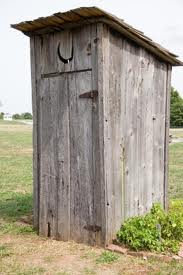 Most people stopped foraging about a century ago. Man also stopped depositing seeds willy-nilly longer ago than that. But until suburbia man did his share of spreading seeds around. Now indoor plumbing is common and any seed eaten by man most likely does not make it through the treatment plant. So not only has man stopped spreading wild seeds around but he is is trapping what seeds he does eat. That certain alters the environment some. But ,the past dies hard because he is still selectively spreading seeds around.
Most people stopped foraging about a century ago. Man also stopped depositing seeds willy-nilly longer ago than that. But until suburbia man did his share of spreading seeds around. Now indoor plumbing is common and any seed eaten by man most likely does not make it through the treatment plant. So not only has man stopped spreading wild seeds around but he is is trapping what seeds he does eat. That certain alters the environment some. But ,the past dies hard because he is still selectively spreading seeds around.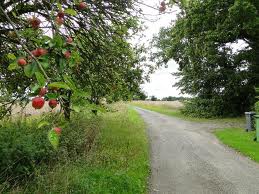 As a boy growing up in rural Maine, I wondered why apples trees always grew next to the road, not out in the field. Some of my favorite “wild” apples grew next to woods roads, never just in the woods like other trees. The apple trees grew next to roads because people tossed apple cores away. It’s interesting to realize that someone’s littering decades ago is now a tree you’re enjoying. It also implies more.
As a boy growing up in rural Maine, I wondered why apples trees always grew next to the road, not out in the field. Some of my favorite “wild” apples grew next to woods roads, never just in the woods like other trees. The apple trees grew next to roads because people tossed apple cores away. It’s interesting to realize that someone’s littering decades ago is now a tree you’re enjoying. It also implies more. Perhaps littering is a natural instinct, a bit of the flower’s directive still operating within us. Throwing away the seeds of a fruit 40 thousand years ago was doing a plant a favor, maybe its bidding. Tossing the apple core beside the road is no different. We may just have a litter gene developed by flowers. Think of it! Most littering comes after eating food products. We consume and toss. That litter along the road side might be an evolutionary echo from long ago, a bit of our distant foraging past still with us. I think the flowers would agree.
Perhaps littering is a natural instinct, a bit of the flower’s directive still operating within us. Throwing away the seeds of a fruit 40 thousand years ago was doing a plant a favor, maybe its bidding. Tossing the apple core beside the road is no different. We may just have a litter gene developed by flowers. Think of it! Most littering comes after eating food products. We consume and toss. That litter along the road side might be an evolutionary echo from long ago, a bit of our distant foraging past still with us. I think the flowers would agree.
